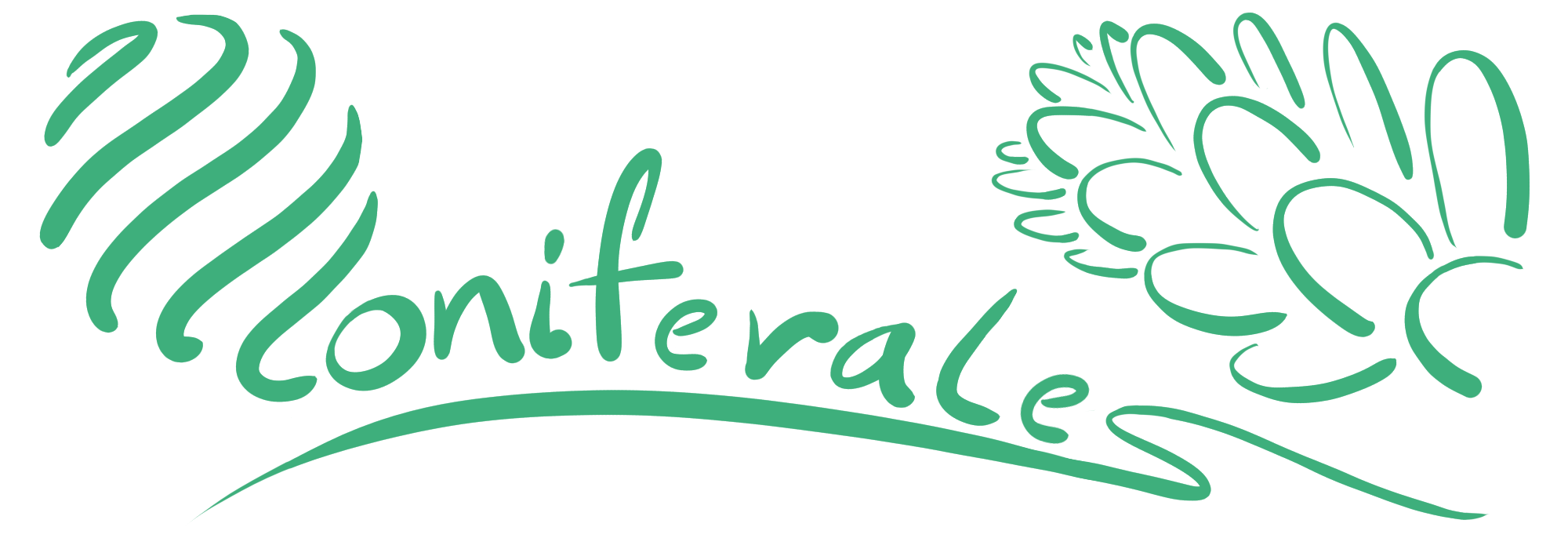Pinaceae Abies recurvata var. recurvata Mast.
Etymology
Abies refers to ‘to rise’; indicating large trees.
recurvata refers to ‘recurved’; indicating its revurved needles.
Colloquial Name
Recurved needle fir
Description
These trees grow between 40 and 60 meters tall, with trunks reaching up to 2.5 meters in diameter. The trunk is straight, cylindrical, and unbranched for much of its height. The crown starts out conical or pyramidal but flattens on top as the tree ages. Young trees have smooth bark that soon develops thin, papery flakes in shades of grey or pinkish-brown. As the tree matures, the bark becomes rough and flaky, breaking into small, dark grey-brown scales.
The main branches are relatively short and spread out horizontally, with smaller branches growing in a similar pattern. The young twigs are usually light brown or pinkish-brown, smooth, and hairless, with subtle ridges between the leaves. The scars left by fallen leaves are circular and light grey.
The buds that produce new growth are about 5 mm long and 4 mm wide, shaped like small ovals. They are covered in resin, though this quickly disappears. The bud scales are triangular, ridged, and light brown, staying on the tree for several years. The leaves are arranged in a spiral around the branches, spreading out in all directions. They range from 1.2 to 3 cm long and are often slightly curved at the base. Their tips can be rounded or pointed. They have a smooth, glossy green upper surface and two pale greenish-white bands underneath. The resin ducts, which carry the tree’s sticky resin, are positioned in the middle of the leaf.
The pollen cones, which produce pollen, grow on the sides of the branches and hang downward. They are 1 to 1.5 cm long, yellow, and have reddish pollen-producing structures. The seed cones, which develop into woody cones, also grow on the sides of the branches but stand upright, often in clusters. They are attached by short stalks and are oval or slightly elongated, with a rounded or small, wart-like tip. They measure 5 to 8 cm long, occasionally up to 9 cm, and 2.5 to 3.5 cm wide. When young, they are bluish-purple, then turn blue-grey before ripening to grey-brown. After the seeds are released, the central cone axis remains, forming a thick, narrow, purple-brown or light brown structure that is usually cylindrical but slightly tapered toward the top.
The seed scales, which hold the seeds inside the cone, are broad and fan-shaped or slightly cup-like. In the middle of the cone, they measure 1.5 to 2 cm long and 2 to 2.5 cm wide. Their surface is smooth but has a fine layer of short hairs. The upper edge is thin and can be either smooth, slightly ragged, or irregularly split. The base narrows into a small stalk. The bracts, which sit behind the seed scales, are spoon-shaped with a short tip and are 1 to 1.5 cm long. They are usually hidden inside the cone, though sometimes their tips extend slightly beyond the scales.
The seeds are wedge-shaped, measuring 5 to 8 mm long and 3 to 4 mm wide, and are light brown. Each seed has a broad, papery wing, 6 to 10 mm long and 5 to 6 mm wide. When young, the wings are violet-blue, but they turn brown as the seed matures.
Subordinate Taxa
There exist 2 subordinate taxa for Abies recurvata:
Distribution
This map shows botanical records (points) for this taxon. By opening the map’s sidebar (collapsed by default) you can toggle visibility or change the basemap. By clicking on records, you reveal more information.
TDWG Codes
3, 36, CHC, CHC-SC, CHN, CHN-GS
Habitat
The natural habitats for Abies recurvata var. recurvata are temperate forests. It is naturally found at an elevation of at least 2200 up to 3200 metres. Other conifers associated with Abies recurvata var. recurvata are:
- Abies squamata
- Picea likiangensis var. rubescens
- Picea asperata
- Larix potaninii
- Picea purpurea
- Abies fargesii var. faxoniana
- Tsuga chinensis
- Picea brachytyla var. complanata
- Pinus armandii
USDA Hardiness zone – 6
Abies recurvata var. recurvata is hardy to USDA Zone 6 (Bannister & Neuner, 2001), meaning its frost tolerance lies somewhere in the range of -23.3C (-10F) to -17.8C (0F).
Species Continuity
The population trend for Abies recurvata var. recurvata is decreasing. There are ongoing threats for Abies recurvata var. recurvata and they are listed as follows:
IUCN Category – VU
According to the IUCN Red List, Abies recurvata var. recurvata has been assigned the status of VU(Vulnerable). This means that according to the Red List criteria, this species qualifies as Vulnerable and is of risk.
Superordinate Taxa
The nearest superordinate taxon for Abies recurvata is Subsect. Homolepides. The coordinate taxa for Abies recurvata are therefore:
Abies recurvata var. recurvata is further placed under Abietoideae. Abies recurvata var. recurvata is also placed under Pinaceae.
This map shows botanical records (points) for this taxon. By opening the map’s sidebar (collapsed by default) you can toggle visibility or change the basemap. By clicking on records, you reveal more information.



Reviews
There are no reviews yet.